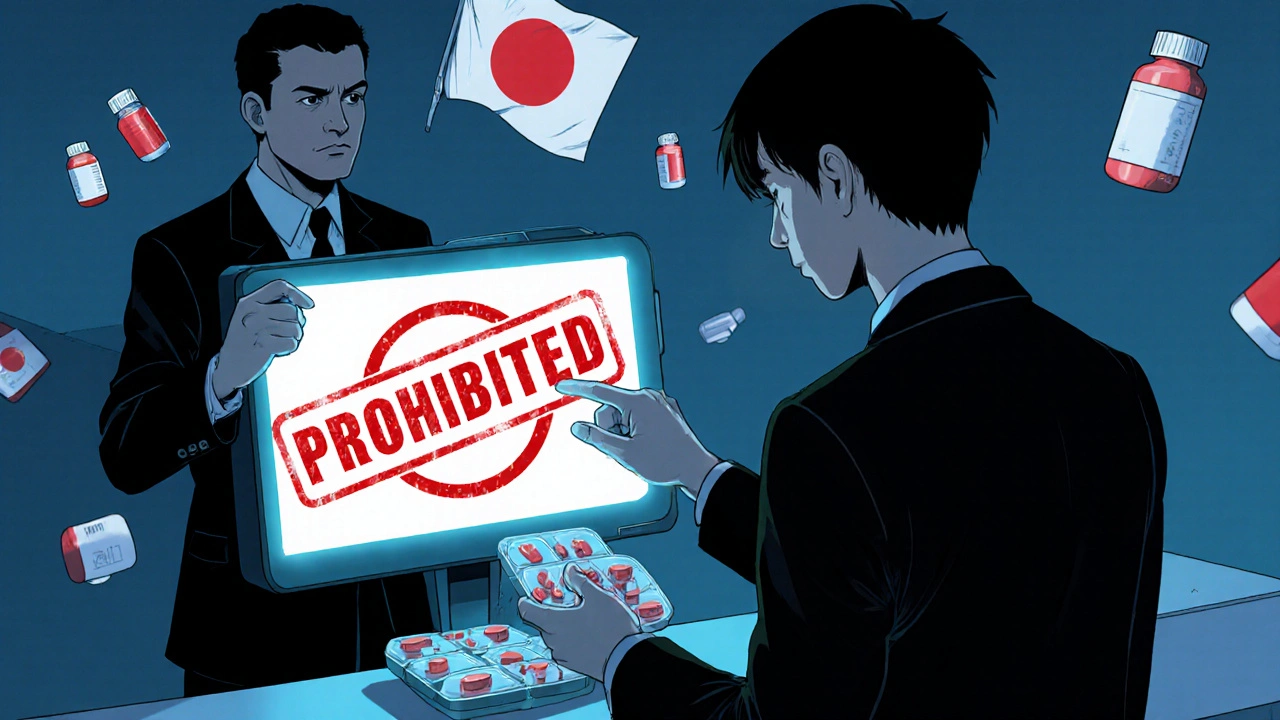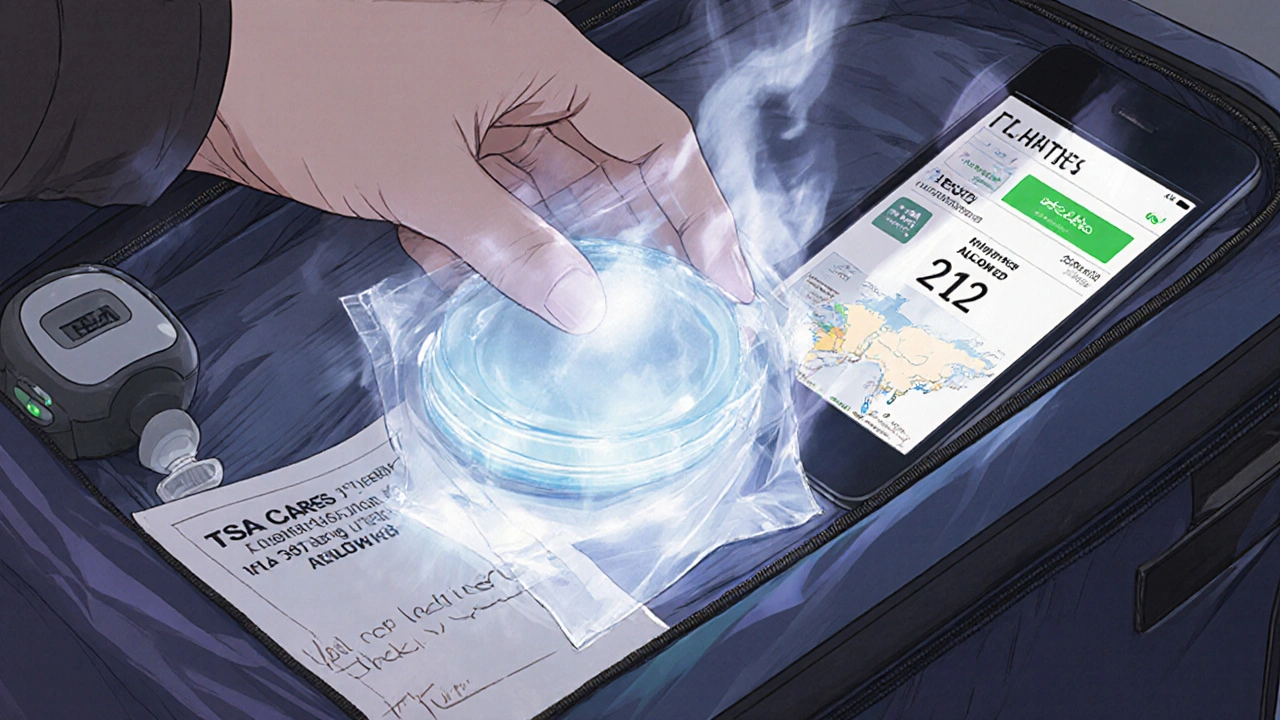Traveling with prescription medications shouldn’t feel like a gamble. You’ve got pills, liquids, injections, patches-maybe even an insulin pump-and you’re worried: TSA will stop you. Will they take your meds? Do they need to be in the original bottle? Can you bring CBD oil? The truth is, the rules are clearer than most people think-but only if you know what they are.
You Can Bring Any Amount of Prescription Medication
The TSA doesn’t limit how much prescription medication you can carry. Not in pills. Not in liquids. Not in creams. Not even in syringes or insulin pens. Whether you’re on a 30-day supply or a 90-day course, you’re allowed to bring it all. This applies to both carry-on and checked bags-but here’s the catch: never put your meds in checked luggage.
Why? Because bags get lost. Bags get delayed. Bags get opened and mishandled. If your life-saving medication ends up in a lost suitcase on the other side of the country, that’s not just inconvenient-it’s dangerous. United Airlines, along with every major U.S. carrier, explicitly says: Keep all medications in your carry-on. That’s not a suggestion. It’s a safety rule.
Liquids Don’t Have to Follow the 3-1-1 Rule
Remember the 3-1-1 rule? One quart-sized bag, 3.4 ounces per container? That doesn’t apply to prescription medications. Insulin, liquid painkillers, cough syrup, saline for contacts, even hydrocortisone cream-all of it can be over 3.4 ounces. You can bring a 4-ounce bottle of liquid oxycodone, a 6-ounce bottle of liquid gabapentin, or a full-sized tube of topical lidocaine. No bag. No limit.
But you still need to declare them. At the security checkpoint, take your liquid meds out of your bag and put them in a separate bin. Tell the officer: “I have liquid medication.” That’s it. No need to explain dosage, no need to show a prescription unless they ask. You’re not hiding anything. You’re just following procedure.
Original Packaging? Not Required, But Highly Recommended
TSA doesn’t legally require your meds to be in original bottles. But here’s what they don’t tell you: airline staff, customs officers, and foreign border agents do.
Imagine this: You land in Tokyo with a bottle of Adderall in a plastic pill organizer. You didn’t know it’s a controlled substance there-and illegal without special permits. You get detained. Your meds are confiscated. You miss your connection. This happens more often than you think.
Even in the U.S., a mismatch between your name on the bottle and your ID can cause delays. TSA’s own data shows 78% of medication-related security delays in 2023 were due to name mismatches. A missing middle initial. A typo. An old prescription with a different last name. These tiny errors add up.
Best practice? Keep your meds in original bottles with the pharmacy label. If you’re worried about space, bring a copy of your prescription or a doctor’s note. That’s enough to clear up confusion.
CBD and Marijuana Are Still a No-Go
Here’s where things get messy. You see CBD gummies, tinctures, and creams everywhere. You think: It’s legal in my state. It’s not marijuana. Why can’t I bring it?
Because federal law still bans it. The TSA follows federal rules-not state laws. Even if your CBD product says “0.3% THC or less,” TSA officers are still trained to treat anything that looks like cannabis as a potential violation. In 2023, over 14,000 CBD products were confiscated by TSA-even though they were legally compliant. The Government Accountability Office confirmed this was due to inconsistent training and confusion among officers.
Bottom line: Don’t risk it. If you need CBD for pain, anxiety, or sleep, buy it at your destination. Or leave it at home. The hassle isn’t worth it.
And marijuana? Full stop. No THC. No edibles. No vape pens. Even if you have a medical card. Even if you’re flying from Colorado to California. Federal airspace means federal law. Period.

Traveling Internationally? Check the Destination Country First
TSA lets you bring your meds. But what about the country you’re flying into?
Japan bans Adderall. South Korea treats Xanax like heroin. The UAE has zero tolerance for any controlled substance-even if it’s prescribed. In 2023, a traveler from New York was arrested in Dubai for carrying a single bottle of Valium. He had a valid U.S. prescription. It didn’t matter.
The CDC’s 2024 Yellow Book warns: “Consequences include delay, confiscation, denial of entry, or arrest.” That’s not a scare tactic. That’s reality.
Before you fly, check the U.S. State Department’s website or use the TSA’s new mobile app feature. It pulls data from the International Association for Medical Assistance to Travellers (IAMAT) and shows you which medications are allowed in 212 countries. Don’t skip this step.
Medical Devices? Know Your Rights
If you use an insulin pump, CGM, nebulizer, or any other medical device, you’re entitled to a visual inspection instead of an X-ray. TSA officers are trained to handle these devices with care. But you need to tell them before you walk through the scanner.
Don’t wait until they ask. Say: “I have a medical device. I’d like a pat-down instead of X-ray.” They’ll guide you to a private area if needed. You can also request a female officer if you’re uncomfortable.
For complex equipment like ventilators or feeding pumps, contact TSA Cares at 1-855-787-2227 at least 72 hours before your flight. They’ll assign a specialist to help you through security.
What About Frozen Gel Packs?
Yes, you can bring frozen gel packs for insulin or other temperature-sensitive meds. They must be completely frozen when you get to the checkpoint. If they’re slushy, TSA might confiscate them. Pack them at the bottom of your bag, surrounded by ice, and keep them sealed.
Pro tip: Use reusable gel packs instead of ice cubes. Ice melts. Gel packs stay solid longer.

What If TSA Confiscates Your Meds?
It’s rare, but it happens. If they take your medication, ask for a receipt. Get the officer’s name and badge number. File a complaint with TSA’s Contact Center at 1-866-289-9673 or online at TSA.gov. You have the right to appeal.
Don’t argue at the checkpoint. Stay calm. Say: “I’d like to speak to a supervisor.” Most issues get resolved quickly once a supervisor is involved.
TSA PreCheck Makes It Easier
If you’re a TSA PreCheck member (about 28.7 million people are), you don’t have to remove your liquids, laptops, or medications from your bag. Just walk through the scanner like normal. Your meds stay in your carry-on. No bin. No declaration. No hassle.
It’s one of the best reasons to sign up. Even if you only fly twice a year, the time saved is worth the $78 fee.
What to Pack: A Simple Checklist
- All medications in carry-on luggage
- Original prescription bottles with your name and pharmacy label
- Copy of your prescription or doctor’s note (especially for controlled substances)
- Medication list with generic and brand names
- Insulin, syringes, or pumps-declare them before screening
- Frozen gel packs-fully frozen, sealed
- CBT or CBD products-leave them at home
- Check destination country rules before you fly
Common Mistakes to Avoid
- Transferring pills into unlabeled containers (CDC says this caused 34% of international border issues in 2023)
- Assuming state laws override federal rules (they don’t)
- Waiting until the last minute to check international rules
- Putting meds in checked baggage
- Not declaring liquids
The bottom line? Traveling with meds is straightforward if you plan ahead. Know the rules. Pack smart. Stay calm. You’ve got this.
Can I bring my prescription pills in a pill organizer?
Yes, you can. TSA doesn’t require original bottles for pills. But if you’re flying internationally, many countries require the original labeled container. To avoid issues, keep your meds in the original bottle with the pharmacy label, and carry a copy of your prescription as backup.
Do I need a doctor’s note for my prescription meds?
Not for domestic flights in the U.S., but it’s a smart idea-especially for controlled substances like opioids, ADHD meds, or anxiety medications. A short note from your doctor stating the medication, dosage, and medical necessity can save hours of delays at security or customs.
Can I bring my insulin pen on a plane?
Yes. Insulin pens, including Omnipod systems, are allowed in carry-on luggage with no quantity limit. You don’t need to remove them from your bag, but you should declare them to the TSA officer. They can be screened visually or with a swab test-no X-ray needed.
Is CBD oil allowed on planes?
Only if it contains 0.3% THC or less and is derived from hemp. Even then, TSA officers may still confiscate it due to inconsistent training. Many travelers report being stopped even with compliant products. To avoid risk, leave CBD products at home or buy them at your destination.
What if I’m flying from another country to the U.S.?
Customs and Border Protection (CBP) recommends bringing no more than a 90-day supply of medication. If you need more, you’ll need a letter from your doctor and possibly a special permit. Always declare all medications at U.S. customs-even if you think they’re allowed. Better safe than detained.

